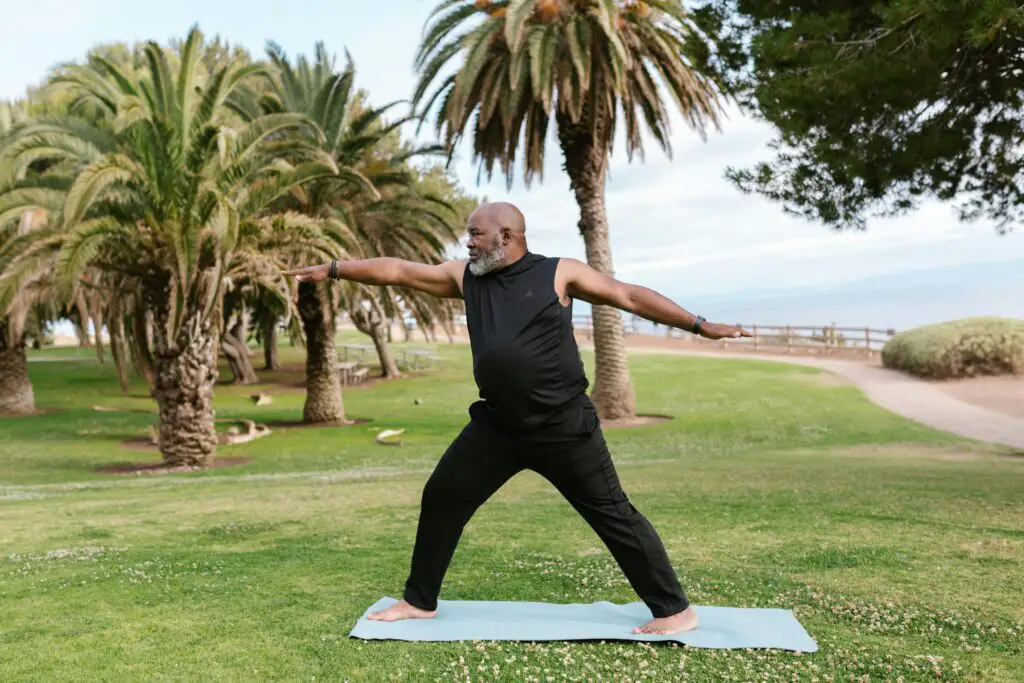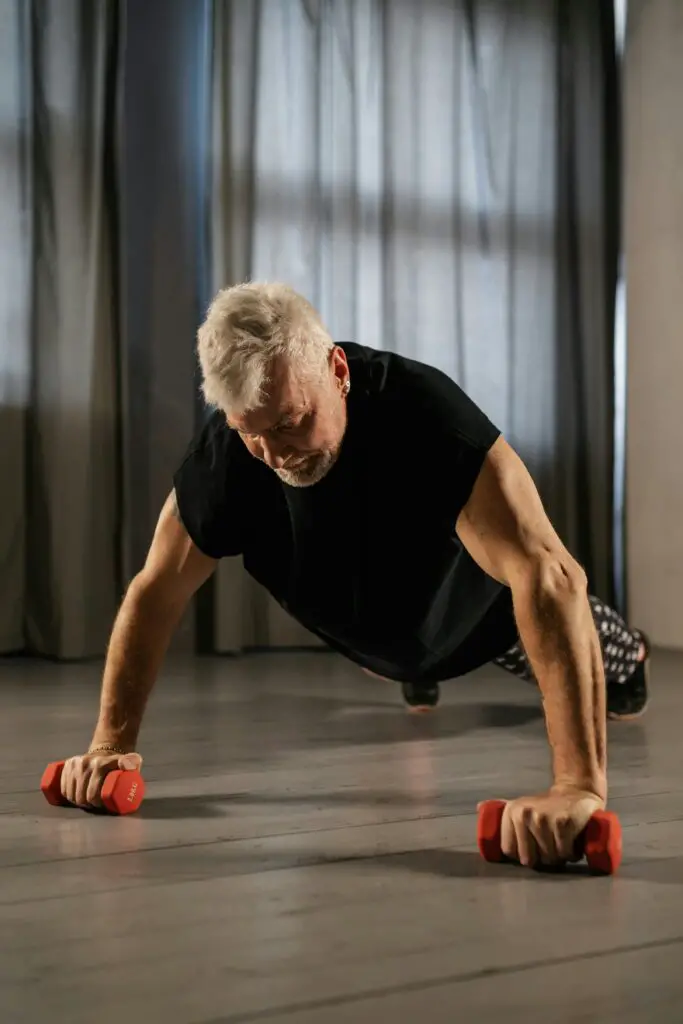Many worry about having “bat wings, ” “bingo wings,” or flabby arms. This is especially the case for seniors. A lack of exercise, weight loss, or aging can all contribute to this extra flab or drooping skin beneath the arms. These areas can be toned and strengthened with the appropriate exercises and lifestyle modifications to improve beauty and functionality.

Understanding Senior Fitness
Our bodies change as we age, and two of those changes are a loss of muscle mass and bone density. For this reason, maintaining regular physical activity is essential for seniors to preserve their general health and mobility. Senior fitness programs emphasize workouts that enhance cardiovascular health, strength, flexibility, and balance to meet these particular needs.
Benefits of Exercise for Seniors
Seniors who regularly exercise could gain numerous physical and psychological advantages. Here are a few main benefits:
Improved Muscle Strength and Tone: We naturally lose strength and muscle mass as we age. Seniors who exercise, especially strength training, can maintain or even grow their muscular mass, improving their strength and tone. Maintaining independence and carrying out regular tasks require strong muscles.
Increased Bone Density: Walking, dancing, and resistance training are weight-bearing exercises that can lower the risk of fractures and falls and enhance bone density. Osteoporosis is a frequent disorder among seniors, especially women.
Enhanced Cardiovascular Health: Frequent aerobic exercise, like cycling, swimming, or walking, lowers blood pressure, strengthens the heart muscle, and improves circulation, contributing to better heart health. This lessens the chances of stroke, heart disease, and other cardiovascular conditions.
Better Joint Health and Flexibility: Exercise can help reduce joint stiffness and increase flexibility, facilitating daily movements and lowering the chance of injury. Seniors who engage in yoga, tai chi, and mild stretching activities can preserve their range of motion and joint mobility.

Reduced Risk of Chronic Diseases: Frequent exercise can help control or prevent several chronic illnesses common in older adults, such as osteoporosis, diabetes, arthritis, and cancer. Seniors can live longer, healthier lives by exercising since it boosts immunity and general health.
Types of Exercises for Flabby Arms
Strength Training Exercises
Dumbbell Curls: Holding a dumbbell in each hand with the palms facing forward, raise the weights slowly to your shoulders by bending your elbows and curling them there.
Triceps Dips: Position on a bench or a chair with your hands holding the edge next to your hips. Push yourself back up to the beginning position after raising your hips off the seat and lowering your body with a bending elbow.
Push-ups: Start in a plank position with your hands shoulder-width apart. Bending your elbows, lower your body toward the ground and then push yourself back to the starting position.
Resistance Band Exercises
Bicep Curls: Position yourself in the center of a resistance band, keeping one end of the band in each hand, and place your feet hip-width apart. Keep your elbows close to your sides as you curl your hands toward your shoulders.
Triceps Extensions: Take a stand With one foot firmly on the band and one hand held behind your head. Raise your arm to its maximum length and then bring it back down.
Bodyweight Exercises
Arm Circles: Place your arms out to the sides and place your feet shoulder-width apart. Using your arms, make little circles that progressively get bigger.
Arm Raises: Use no weight or hold a light object in either hand. Raise and slowly lower your arms to the sides until they parallel the ground.
Yoga and Pilates
Downward Dog: Starting in the plank position, raise your hips to the ceiling, producing an inverted V with your hands and feet remaining on the floor.
Plank Pose: Start with your hands directly beneath your shoulders in the push-up position. Use your core and bend your elbows to keep your posture straight from your head to your heels.

Swimming
Freestyle Stroke: Use the freestyle stroke to swim laps for a full-body workout that works the arms, shoulders, and back.
Water Aerobics: Take part in water aerobics sessions, which frequently feature workouts with water resistance that target the arms.
Boxing and Martial Arts
Shadow Boxing: With your hands elevated in a boxing stance, strike forward alternatively with each arm, using your arms and shoulders.
Karate Blocks: With your hands raised in a boxing stance, strike forward alternatively with each arm, using your arms and shoulders.
Dance and Aerobics
Zumba: With your hands raised in a boxing stance, strike forward alternatively with each arm, using your arms and shoulders.
Aerobic Kickboxing: Take aerobic kickboxing lessons, which blend martial arts-inspired punches and arm strikes with cardiovascular training.
Tips for Safe and Effective Workouts
Seniors should put safety first when exercising to avoid injury. It’s crucial to begin cautiously, gradually build up your intensity, pay attention to your body, and stop if you feel pain or discomfort. Proper form is also essential to ensure you’re working the right muscles and preventing strain. Moreover, wearing the appropriate footwear and drinking plenty of water might help reduce the risk of accidents during exercise.
Creating a Routine
When it comes to observing the benefits of exercise, consistency is essential. Seniors should try to include at least two or three arm-strengthening exercises in their weekly routine. Overuse injuries can be avoided by varying the routines and adding rest days.

Nutrition and Hydration
Eating a balanced diet is as important as exercising for general health and well-being. Seniors want to concentrate on eating a well-balanced diet full of nutritious grains, fruits, vegetables, and lean protein. Staying hydrated is also crucial to replenish fluids lost through sweat, particularly when exercising.
Consulting a Professional
Consult a trained professional for advice if you’re unsure where to begin or have questions about safe exercise. In order to create a personalized exercise program that fits your goals and needs, a licensed personal trainer or physical therapist can help
Conclusion
Many seniors are frustrated by their flabby arms, yet these regions can be efficiently toned and strengthened with the appropriate method. You can see changes in your arm strength and look by adding specific workouts to your routine, keeping safety first, and practicing consistency.
